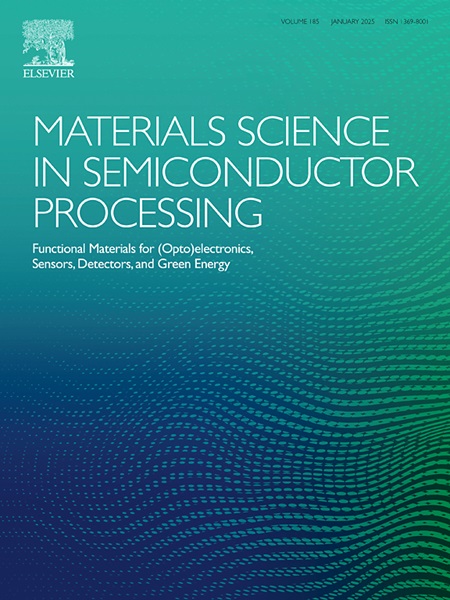热-电-机耦合场下 3D-TSV 的多裂纹空间传播演化分析
IF 4.2
3区 工程技术
Q2 ENGINEERING, ELECTRICAL & ELECTRONIC
引用次数: 0
摘要
硅通孔(TSV)作为一种互连微结构,在三维(3D)芯片中发挥着至关重要的作用。随着互连密度的提高,源于界面裂纹引发和传播的可靠性问题日益突出。本研究基于三维 J 积分断裂力学方法,深入研究了热-电-机耦合场下裂纹类型、裂纹扩展方向、电流大小和方向对裂纹扩展空间特性的影响。结果表明1)裂纹J积分与环境温度变化一致,与电流大小正相关;2)当电流方向与裂纹扩展方向一致时,电子空穴会逐渐在裂纹尖端聚集,从而加快裂纹扩展速度;3)不同裂纹会呈现不同的形态特征,RDL-SiO2和Si-SiO2裂纹中会出现贝壳状裂纹,TSV-Cu内部裂纹呈现不规则梯形。希望相关结果能为 TSV 的可靠性分析和优化设计提供一定的参考。本文章由计算机程序翻译,如有差异,请以英文原文为准。
Multi-crack spatial propagation evolution analysis of 3D-TSV under thermal-electric-mechanical coupling field
As an interconnected microstructure, Through-Silicon Via (TSV) play a vital role in three-dimension (3D) chip. With the improvement of interconnection density, the reliability problems origin from interface crack initiation and propagation become increasingly prominent. In this study, the effects of the crack type, crack propagation direction, current magnitude and direction on the spatial characteristic of crack propagation under thermal-electric-mechanical coupling field is deeply investigated based on 3D J-integral-based fracture mechanics method. Results shows that: 1) Crack J-integral is consistent with the variation of ambient temperature and positively correlated with the current magnitude; 2) When the current direction is same as crack propagation direction, electron holes will gradually accumulate at crack tip, which can accelerate the crack propagation rate; 3) Different cracks will present different morphological characteristics, the shell pattern cracks can be found at RDL-SiO2 and Si-SiO2 cracks, and the internal cracks TSV-Cu present irregular trapezoidal shape. Relevant result is hope to provide certain references for the reliability analysis and optimal design of TSV.
求助全文
通过发布文献求助,成功后即可免费获取论文全文。
去求助
来源期刊

Materials Science in Semiconductor Processing
工程技术-材料科学:综合
CiteScore
8.00
自引率
4.90%
发文量
780
审稿时长
42 days
期刊介绍:
Materials Science in Semiconductor Processing provides a unique forum for the discussion of novel processing, applications and theoretical studies of functional materials and devices for (opto)electronics, sensors, detectors, biotechnology and green energy.
Each issue will aim to provide a snapshot of current insights, new achievements, breakthroughs and future trends in such diverse fields as microelectronics, energy conversion and storage, communications, biotechnology, (photo)catalysis, nano- and thin-film technology, hybrid and composite materials, chemical processing, vapor-phase deposition, device fabrication, and modelling, which are the backbone of advanced semiconductor processing and applications.
Coverage will include: advanced lithography for submicron devices; etching and related topics; ion implantation; damage evolution and related issues; plasma and thermal CVD; rapid thermal processing; advanced metallization and interconnect schemes; thin dielectric layers, oxidation; sol-gel processing; chemical bath and (electro)chemical deposition; compound semiconductor processing; new non-oxide materials and their applications; (macro)molecular and hybrid materials; molecular dynamics, ab-initio methods, Monte Carlo, etc.; new materials and processes for discrete and integrated circuits; magnetic materials and spintronics; heterostructures and quantum devices; engineering of the electrical and optical properties of semiconductors; crystal growth mechanisms; reliability, defect density, intrinsic impurities and defects.
 求助内容:
求助内容: 应助结果提醒方式:
应助结果提醒方式:


